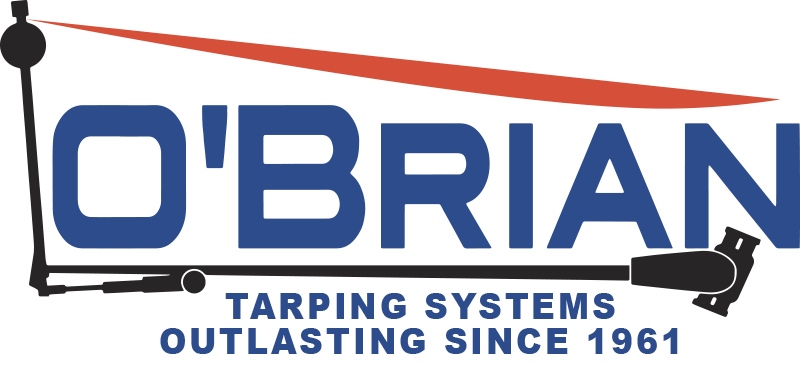These tarp systems (Magnum, Autocover 2CH and CushNcover) use a Master/Slave hydraulic arrangement and cannot be bled like a traditional setup (cracking hoses until no bubbles). All of your hydraulic flow goes to the Driver’s cylinder, base port first. Once it leaves the rod port of the Driver’s cylinder it then travels to the base port of the Passenger cylinder. As it leaves the rod port of the Passenger cylinder it then goes back to the control valve and back to tank. Instead of cracking hoses, you will need to make sure that your tarp roller is sitting in the bottom of the cradle. Once the roller is sitting in the bottom of the cradle, you will need to retract the lower cylinders until it sounds like you are bleeding over the relief. At that point continue to retract the lower cylinders for 3-5 minutes. This should fix your synchronization issues. Other causes for the lower cylinders to lift crooked could be:
- Cylinder’s need to be rebuilt or replaced
- Offset linkage (Magnum) bent and needs to be replaced. This can be diagnosed by looking at where the lifting cylinder attaches to the offset linkage (LP-MD or LP-MP) and its relation to the access hole. If the pin is not center or off to where the pin can NOT be removed through the access hole, the LP-MD or LP-MP is bent and needs to be replaced
- Lifting cylinders have trash in the rephase port. Remove the cap from the rephase port (capped port beside the base port on the lifting cylinders). Carefully remove the check ball and spring and “burp” the system by retracting the cylinders to purge the port. Replace the check ball and spring and reinstall the cap.
For the OTS tarp system, these hydraulic cylinders are your standard hydraulic arrangement and can be bled traditionally. If this system is out of sequence:
- Make sure that the pivot bolts are torqued to 100 ft/lbs on each side.
- Check to see if either arm has been damaged or significantly bent to cause the arms to be crooked. Fix or replace as necessary
- Check hoses to make sure they are not pinched. Repair or replace as necessary
- Cylinders may need to be rebuilt or replaced
For the Duracover series, these arms are spring loaded. No bleeding is necessary.
- The tarp may be out of square. Square tarp at tarp roller or at tarp bar
- Pivot point may not be at the same location from side to side. Reinstall pivot point
- Tarp arms may not be the same length. Measure and adjust as necessary
- Gantry may not be square with hoist. Measure and repair as necessary
